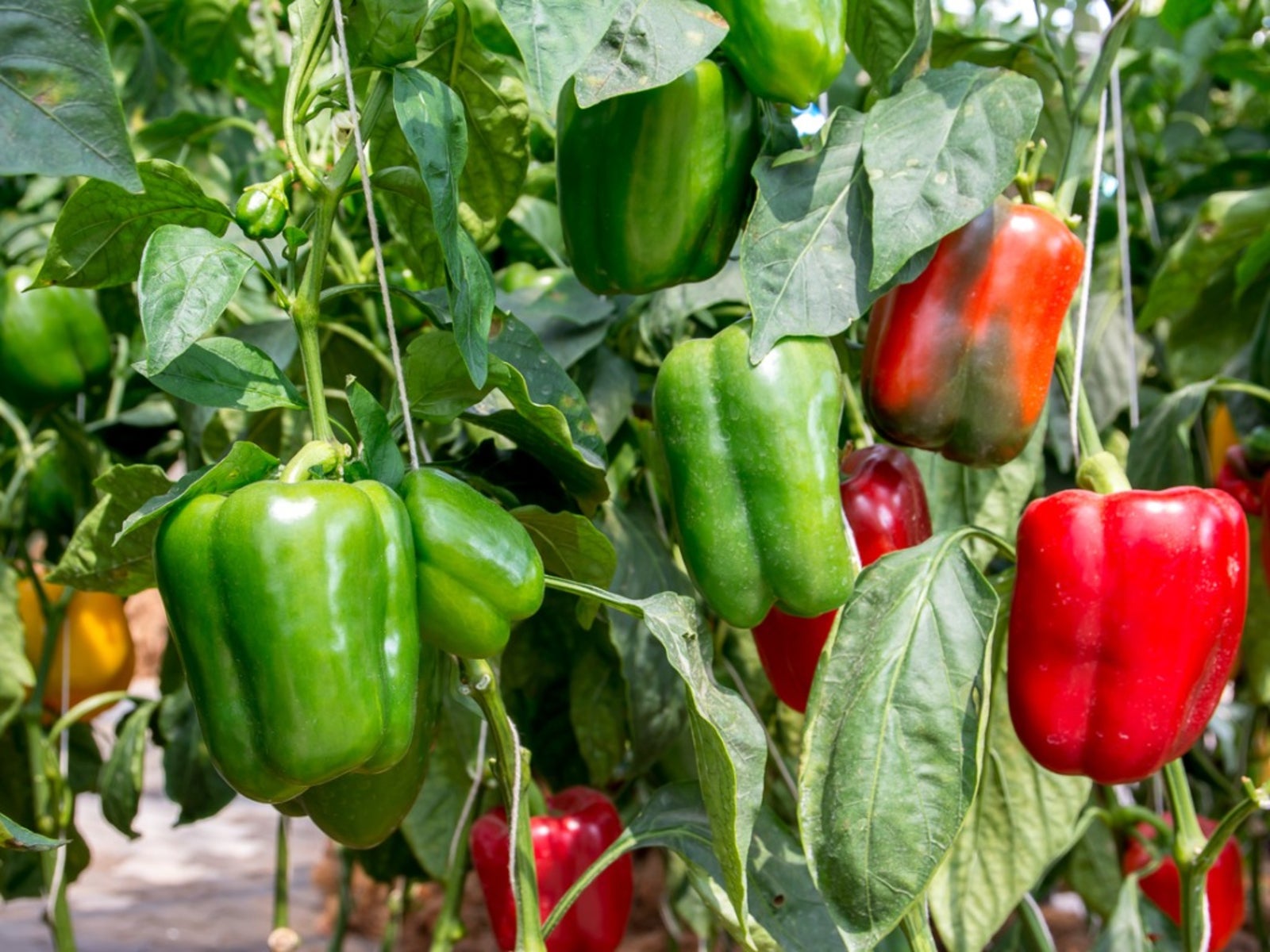Green bell peppers are a garden staple prized for their crunchy texture and mild, sweet flavor. But before those crisp fruits can be harvested, green pepper plants go through several key growth phases Understanding and visualizing these stages can help you provide tailored care for a productive pepper crop.
In this article, let’s explore images depicting the life stages of a green bell pepper plant.
Seedling Stage
The journey begins when a pepper seed germinates in warm soil. The baby seedling emerges with two small starter leaves called cotyledons.
[Photo of pepper seedling with cotyledons]
At this tender stage, seedlings need consistent moisture, warmth, and light to thrive Their stems are delicate and require protection from wind or animals. After 1-3 weeks of growth, the first true pepper leaves appear.
[Photo of young pepper plant with true leaves]
Vegetative Growth Stage
Over the next few weeks, the plant focuses on leaf and branch growth, gradually maturing in size and bushiness.
[Photo of immature pepper plant]
More leaves mean more energy production through photosynthesis. A strong foundation of foliage supports later fruit production. The plant may reach 1-2 feet tall during this phase.
Flowering Stage
After several weeks of vegetative growth, small white flowers begin to form where branches meet the main stem.
[Close up photo of pepper flowers]
Self-pollinating peppers can form fruits without insects. However, visiting bees help distribute pollen. Each fertilized flower can produce a pepper if conditions are right.
Fruiting Stage
Shortly after flowering, tiny green peppers take shape where blossoms once were. The fruits swell rapidly under warm conditions.
[Photo of green peppers growing on plant]
Bell peppers are edible at any size, but peak flavor develops when full mature size is reached. Green peppers eventually ripen to red, orange, yellow, or other colors.
Ripening Stage
Given time on the plant, green peppers transform to vivid red, orange, or yellow fruits.
[Photo comparison of green vs. red bell pepper]
Ripe peppers have higher sugar content and more beneficial nutrients like vitamin C and carotenoids. But green peppers can be harvested sooner.
Harvest Time
Once peppers reach mature dimensions for their variety, use a sharp knife to cut them from the plant, retaining some stem.
[Photo of harvested green bell peppers]
Handle fruits gently to avoid bruises. Store freshly picked peppers in the refrigerator to extend shelf life. Enjoy them diced in salads, sautéed, roasted, or stuffed!
Getting to know the phases of green pepper growth will help you care for your plants. Pay close attention to support needs at each stage, and you’ll be rewarded with a bountiful pepper harvest.
How to Care for Green Pepper Plants
FAQ
What do green pepper plants look like?
How long does it take for a green pepper plant to produce fruit?
Do green bell pepper plants come back every year?
Do green pepper plants like full sun?
How tall do pepper plants grow?
Types Of Pepper Plants By Size Choosing pepper varieties by growth habit helps you plan out your space. Many hot pepper plants typically grow between 2 to 4 feet tall, depending on variety. When plants are 2 feet or smaller, they make the “compact” category. Varieties labeled “tall” grow 4 feet and higher.
How do you grow green peppers?
Aerate the soil around the holes thoroughly. Plant the green pepper seedlings in the holes and refill them loosely. Green peppers should be planted approximately 18-24 in (46-60 cm) apart to have room to grow without overtaking one another. Add a little fertilizer to the soil.
Can green peppers be grown year-round?
Green peppers can be grown basically year-round in arid regions where the environment is hot and temperate. Just make sure your plants get enough water if you’re growing them in a place that’s hot with dry conditions.
What are the different types of hot pepper plants?
You’ll also find different types of hot pepper plants, from hot to super hot varieties. These are some of the most popular types of hot peppers to grow. This list of hot peppers is broken into two groups of heat levels, from Serrano level all the way to chilies that are 1 million or more Scoville Heat Units (SHU). Hot Fish
- The Ultimate Guide to Growing Strawberries in Raised Beds - August 8, 2025
- No-Dig Garden Beds: The Easiest Way to Grow a Beautiful Garden - August 6, 2025
- How to Protect and Preserve Wood for Raised Garden Beds - August 6, 2025

